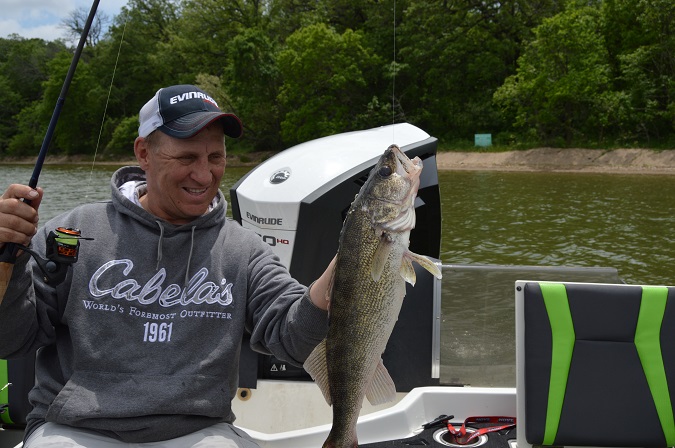
This period of time we’re in right now, the time between late summer and early fall, can provide some very good fishing, but it can also be a challenging time to catch fish. The night-time air temperatures are chilly, but the daytime temps are still warm. Thirty degree temperature swings in a day aren’t uncommon at all. These temperature changes, along with shorter days, let the fish know that the times are changing. They still have to eat, and if you put your bait in front of them they’ll eat it, but sometimes you have to do different things to get them to do so. Here are some ideas on those different things.
Starting off: In the autumn months, they’ll still be where the food is, but with the changes going on, and after a full summer of being eaten, the baitfish numbers will be less than just a month ago, and they’ll be more spread out. The baitfish that are left will be maybe shallow, maybe deep, maybe along a weedline, or, perhaps, just out wandering around, moving from one location to another. The gamefish will be doing the same. So, if you want to increase your chances for success, you’ve got to keep moving and trying different baits and different areas. You’ll find a fish here, another one over there, and a couple more somewhere else.
When we go fishing, it’s good to try to figure out what most of the fish are doing. That’s called establishing a pattern. Establishing a pattern means you’re trying to determine where the fish are, what bait they want, and how they want it. In this time between summer and fall, the pattern might be kind of loose. If you’re after walleyes, you can catch them on live-bait rigs, crankbaits or jigs. If largemouth bass are the quarry, you can catch them on several different types of baits. You’ve got to keep doing different things and fish different areas to establish a pattern so you can catch more fish more regularly at this time of year.
Maybe the biggest key to success this time of year is to make a decision about how you’ll go about catching fish. If you’re after largemouth bass, and the lake you’re on has a good deep weedline, you might want to make a commitment to fish the weedline, probably with a jig/soft bait combination. A Jungle Jig or a Rock-It jig with an Impulse Ringworm or Dip-Stick or a 6.5 Hornet crankbait will be outstanding in many situations.
If walleyes are what you’re after, you’ll be very well served to do some sonar work. I’ve caught walleyes in the shallows in some situations in the fall months, but I’ve caught a lot more from deeper structures. Find a deep structure and look it over thoroughly with your sonar. The Raymarine Dragonfly 7 is an outstanding unit that provides great value. Keeping your eyes on the sonar and fishing where it shows fish will enable you to catch more fish more often.
When you see what you think are probably walleyes, drop them a live-bait rig or a jig. Minnows are best as the water cools off, but there are still days when they like a leech or crawler better. If you’re using minnows, four inchers are a good starting size.
It’s important to establish a pattern at any time of the fishing season, but it’s maybe more important to do so at this time of year. The open water fishing season is winding down, get on the water and make the most of our remaining open water fishing.
PHOTO CAPTION-Mike Frisch catches walleyes like this one from deep structure close to shore in the fall. Find out where their food is and you’ll find the larger gamefish.
To see all the most recent episodes of the Fishing the Midwest television series, new fishing related tips, and fishing articles from the past, go to fishingthemidwest.com If you do Facebook, check us out for a variety of fishing related things.
By Bob Jensen
